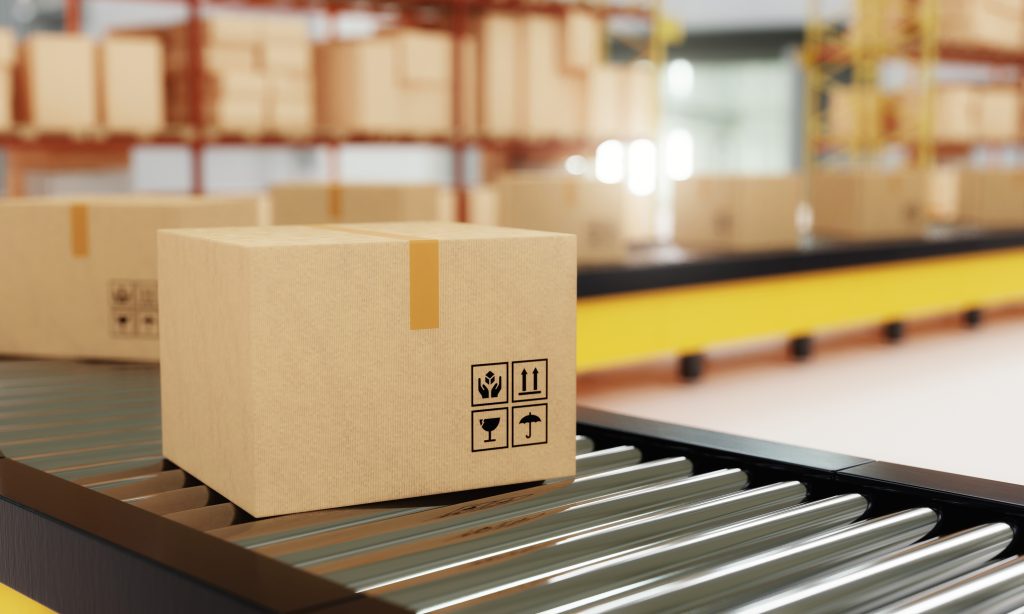3 Key Steps to Optimise Your Logistics Packaging
3 Key Steps to Optimise Your Logistics Packaging

With Eco-Friendliness and general awareness of the environment increasing, the demand for packaging requirements has significantly shifted, with sustainability at the forefront of innovation.
End users have started holding a higher value on how well their products are packaged, how wasteful the packaging is, whilst still desiring fast and efficient delivery. All of these key aspects combined highlight the need to reduce the environmental impact of your operation, whilst maintaining a fast, and high-quality service.
What is packaging for Logistics?
Packaging for Logistics consists of materials and aids which enable packaging and preparation for dispatch.
What is the purpose of packaging for logistics?
The purpose of logistics packaging is to protect products from breakages caused by shocks, vibrations, pressure and dampness, whilst optimising the package for storage and transportation. Packaging an item properly will help to protect against costly, and completely avoidable breakages.
Logistics packaging also focuses on streamlining costs, efficient storage and transportation, whilst maintaining a high level of satisfaction.
Why should I optimise my packaging process?
Optimising your logistical packaging process will allow for cost savings, improved customer satisfaction and retention, and improved use of space.
Using the perfect packaging, especially in the case of e-commerce, dramatically improves the end user’s experience. For example, a customer whose first impression of your company is receiving a broken item in a battered box will have a different experience to a customer who has received good condition products in well-presented packaging.
In this example, the customer who received the damaged goods is less likely to reorder than the other. The importance of the recipient is often overlooked in the logistics industry, although the end user plays the most vital role in an increase in revenue.
How can I optimise my packaging process?
It is no surprise that the most likely place for goods to become damaged is during transport, which is why optimising your usage of packaging is vital to save on costly damages. Optimisations for packaging can include a reduction of the amount of void fill material used, by switching to a bespoke sizes box, adding automation into your process such as a case erector, and switching to a more efficient pallet wrap to increase load stability.
Here, we will explore three key optimisation steps:
Size and shape of the box:
Using an oversized or unusual shape box can result in inefficient use of transport and storage resources. Using a box that is an awkward shape will make it difficult for other boxes to be stacked on top meaning wasted space in a warehouse, ineffectively stacked pallets and a waste of packaging resources if the box is too big.
Switching to a few sizes of easy-to-stack boxes will optimise the pain points mentioned above. If your product is awkwardly shaped, why not explore the route of bespoke packaging? Choosing bespoke will allow for uniformity for even the most bizarre-shaped items.
Packaging Automation:
A great way of ensuring uniformity and time-saving in your packaging is by implementing automation in your operation. Using a case erector, such as the Lantech C1000 will guarantee perfectly erected boxes, with optimal 90-degree angles on each side. These 90-degree angles will ensure load stability and maximise the number of packages that can fit on each pallet or shelf.
The sudden increase in expectations for next day, and even same-day deliveries, has put a huge strain on logistical workforces worldwide. Implementing a level of automation can help ease the strain on your workforce, whilst maintaining a high standard.
Pallet Wrapping:
To stabilise your loads, you may consider investing in pallet-wrapping machinery. Machines such as the Robopac will streamline the relationship between pallet wrap consumption, load stability and the wrapping speed of your pallet by wrapping them using the optimal amount of wrap at a consistent tension.
A further improvement that can be made whilst looking into load stability is the quality of the pallet wrap being used. Due to an increased demand to reduce plastic packaging, there has been a lot of innovation in pallet wrap. Nano films, such as Armour Wrap are designed to require less material to receive the same, or a better result than traditional pallet wraps.
Why is packaging important?
Above, we touched on why packaging is important. From loss prevention to maximisation of efficiency, and customer satisfaction. Packaging plays a huge role in the whole process, from picking to presentation.
Sustainable packaging is more than just a box, it’s a streamlined process to keep everything moving smoothly, limit breakages and reduce the long-term environmental impact of the ever-expanding logistics sector.
Trusting Springpack as your packaging partner will help you save time, space and money as we work with you to optimise your logistical operations. We are experts in environmentally friendly sustainable packaging solutions.
Were Here to Help Guide Inform




